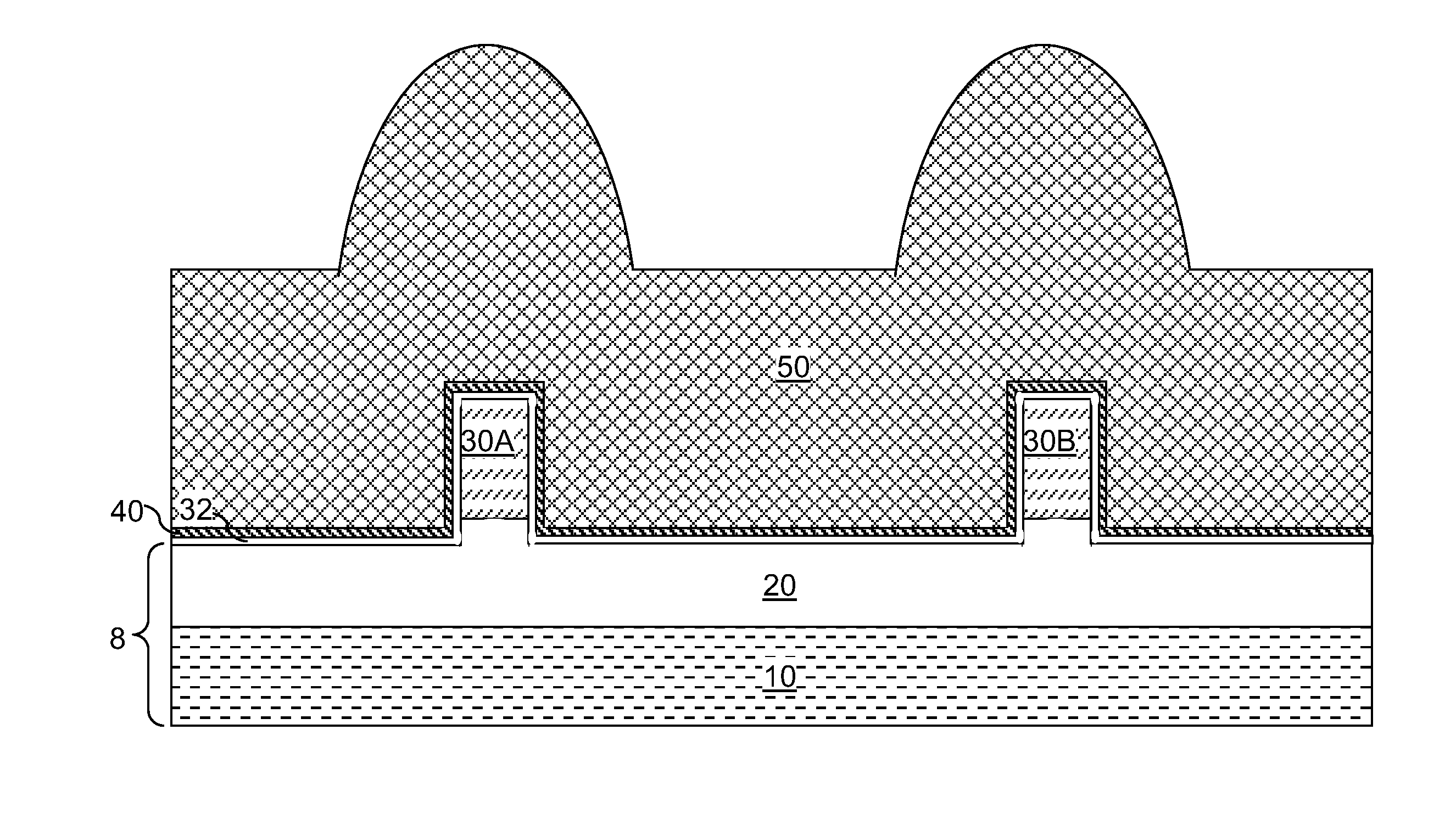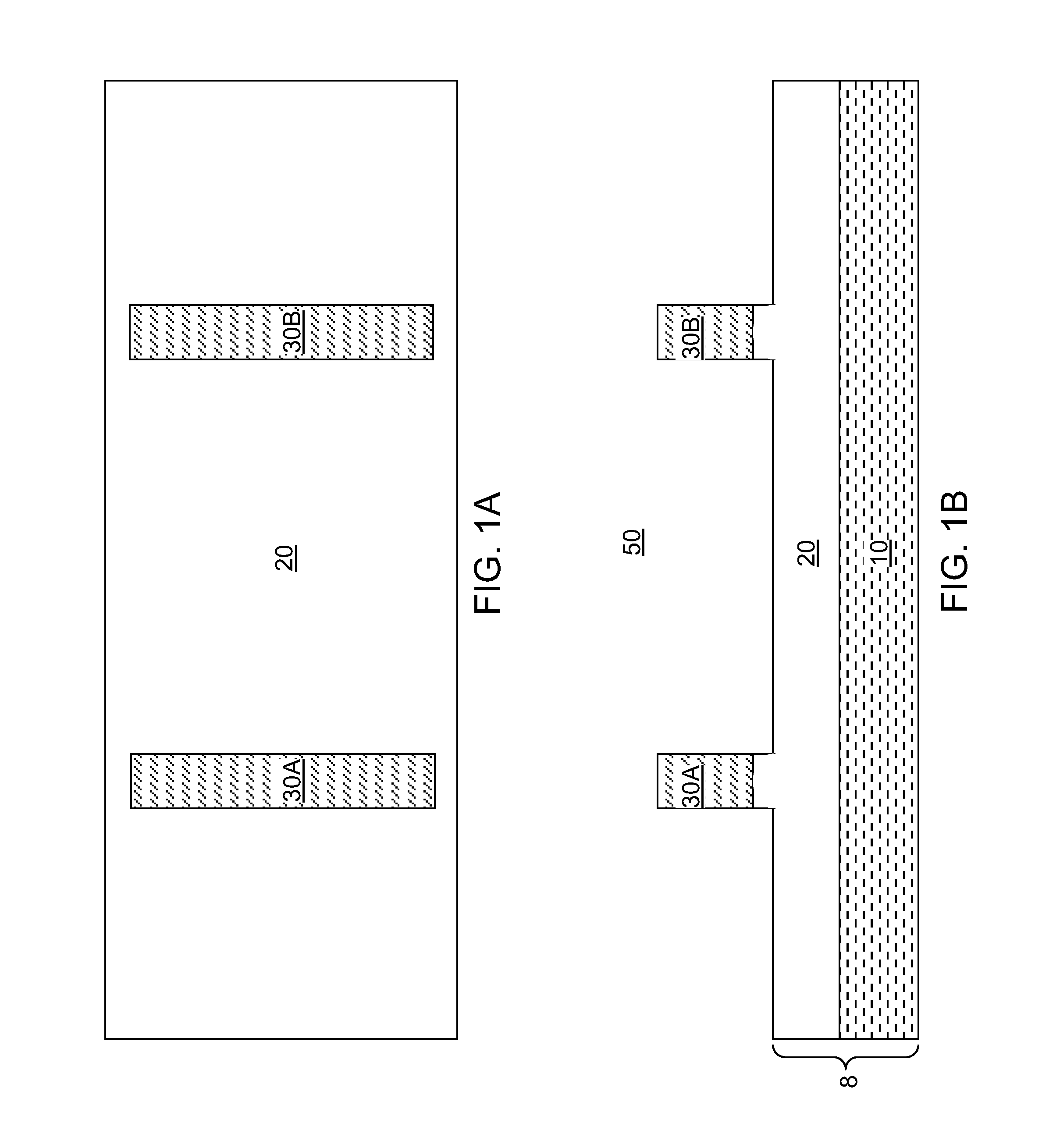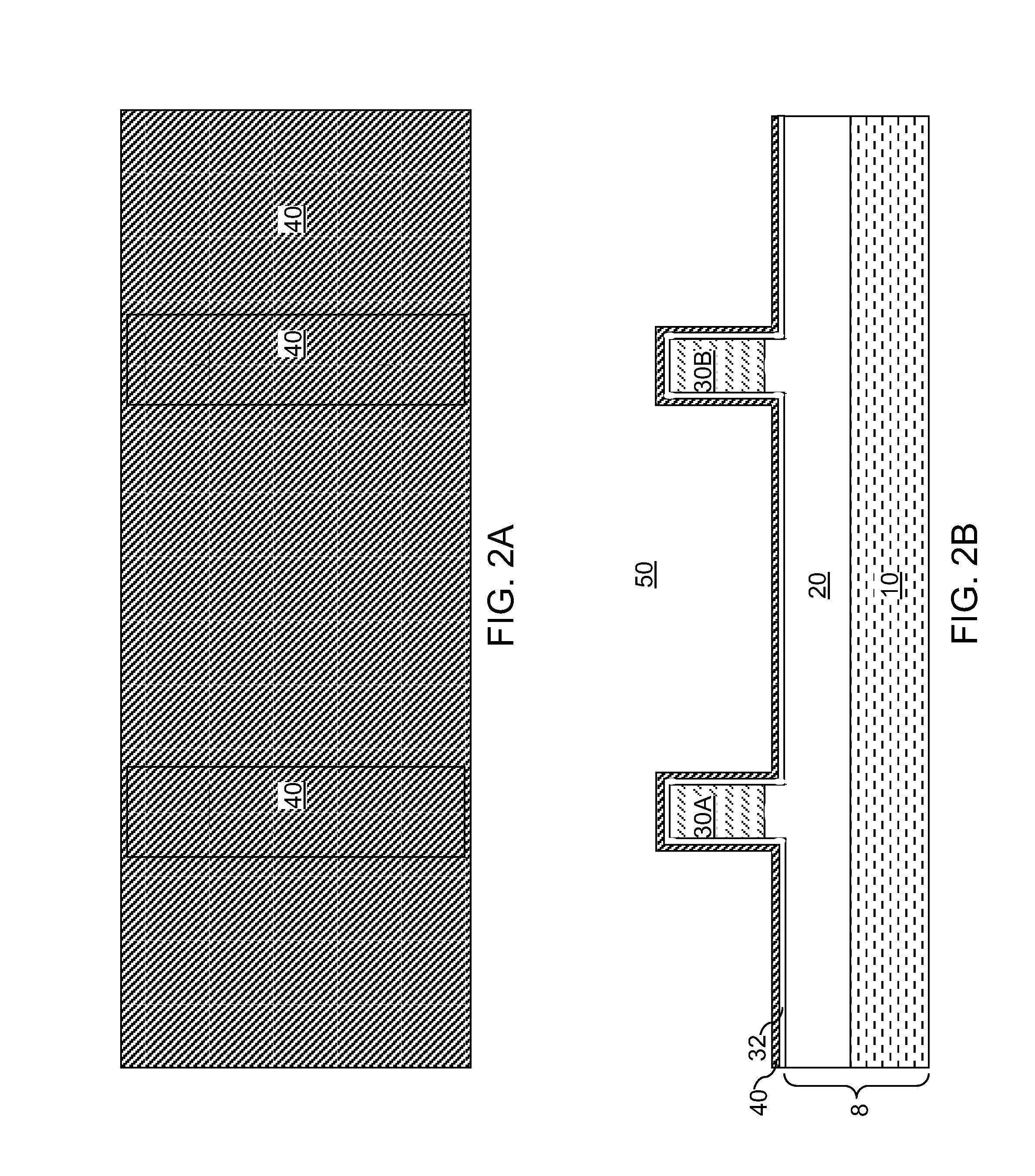Gate strain induced work function engineering
a work function and gate strain technology, applied in the field of field effect transistors, can solve the problems of short gate length devices, cross-diffusion of gate regions with different desired workfunction values, and mobility degradation,
- Summary
- Abstract
- Description
- Claims
- Application Information
AI Technical Summary
Benefits of technology
Problems solved by technology
Method used
Image
Examples
first embodiment
[0041]Referring to FIGS. 1A and 1B, a first exemplary semiconductor structure according to the present disclosure includes a substrate 8 and a first semiconductor material portion 30A and a second semiconductor material portion 30B. The substrate 20 can include a stack of an insulator layer 20 and a handle substrate 10. The first semiconductor material portion 30A and the second semiconductor material portion 30B can be a pair of semiconductor fins having shapes of rectangular parallelepipeds.
[0042]In one embodiment, the first exemplary semiconductor structure can be formed by patterning a semiconductor-on-insulator (SOI) substrate that includes the handle substrate 10, the insulator layer 20 as a buried insulator layer, and a top semiconductor layer. The handle substrate 10 can include a semiconductor material, an insulator material, or a conductive material, and provides mechanical support to the buried insulator layer 20 and the top semiconductor layer 30. The insulator layer 20 ...
second embodiment
[0073]Referring to FIG. 11, a second exemplary semiconductor structure according to the present disclosure can be derived from the first exemplary semiconductor structure by forming a first plurality of semiconductor material fins, such as semiconductor fins, in a first area in which the first gate conductor layer 50 contacts the workfunction material layer 40 (See FIGS. 6A and 6B), and by forming a second plurality of semiconductor material portions, such as semiconductor fins, in a second area in which the second gate conductor layer 60 contacts the workfunction material layer 40 (See FIGS. 6A and 6B).
[0074]For example, a first semiconductor material portion 30A, a second semiconductor material portion 30B, a third semiconductor material portion 30C, and a fourth semiconductor material portion 30D are formed over an insulator layer 20 in a substrate (10, 20). A stack of the gate dielectric layer 32 and the workfunction material layer 40 is formed over the first, second, third, and...
fourth embodiment
[0086]Referring to FIG. 16, a fourth exemplary semiconductor structure according to the present disclosure can be derived from the first exemplary semiconductor structure by forming a first plurality of semiconductor material fins, such as active regions, in a first area in which the first gate conductor layer 50 contacts the workfunction material layer 40 (See FIGS. 14A and 14B), and by forming a second plurality of semiconductor material portions, such as active regions, in a second area in which the second gate conductor layer 60 contacts the workfunction material layer 40 (See FIGS. 14A and 14B).
[0087]For example, a first semiconductor material portion 130A, a second semiconductor material portion 130B, a third semiconductor material portion 130C, and a fourth semiconductor material portion 130D are formed over an insulator layer 20 in the substrate 8′. A stack of the gate dielectric layer 32 and the workfunction material layer 40 is formed over the first, second, third, and fou...
PUM
| Property | Measurement | Unit |
|---|---|---|
| gate lengths | aaaaa | aaaaa |
| thickness | aaaaa | aaaaa |
| thickness | aaaaa | aaaaa |
Abstract
Description
Claims
Application Information
 Login to View More
Login to View More - R&D
- Intellectual Property
- Life Sciences
- Materials
- Tech Scout
- Unparalleled Data Quality
- Higher Quality Content
- 60% Fewer Hallucinations
Browse by: Latest US Patents, China's latest patents, Technical Efficacy Thesaurus, Application Domain, Technology Topic, Popular Technical Reports.
© 2025 PatSnap. All rights reserved.Legal|Privacy policy|Modern Slavery Act Transparency Statement|Sitemap|About US| Contact US: help@patsnap.com



